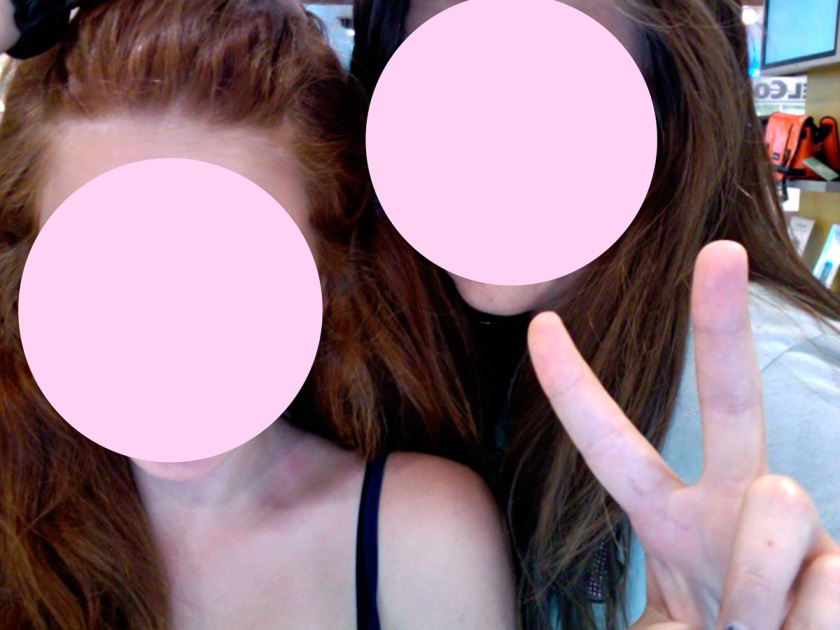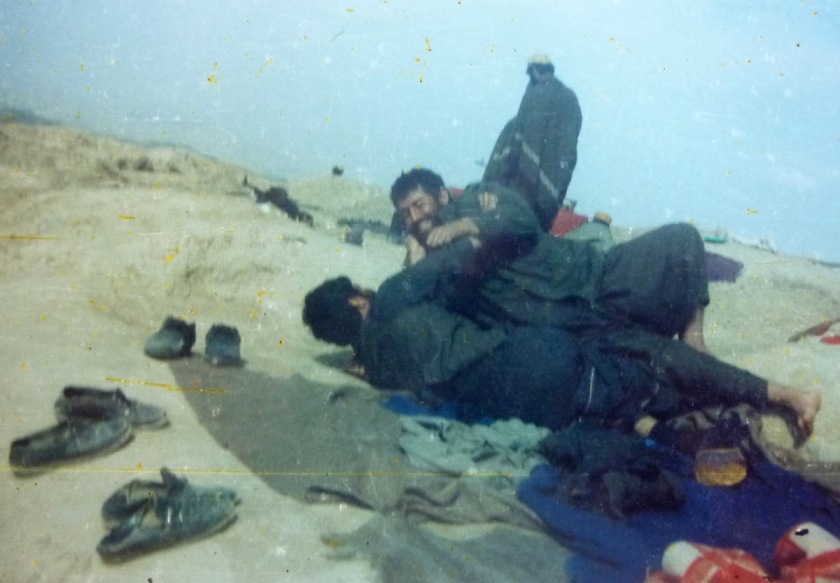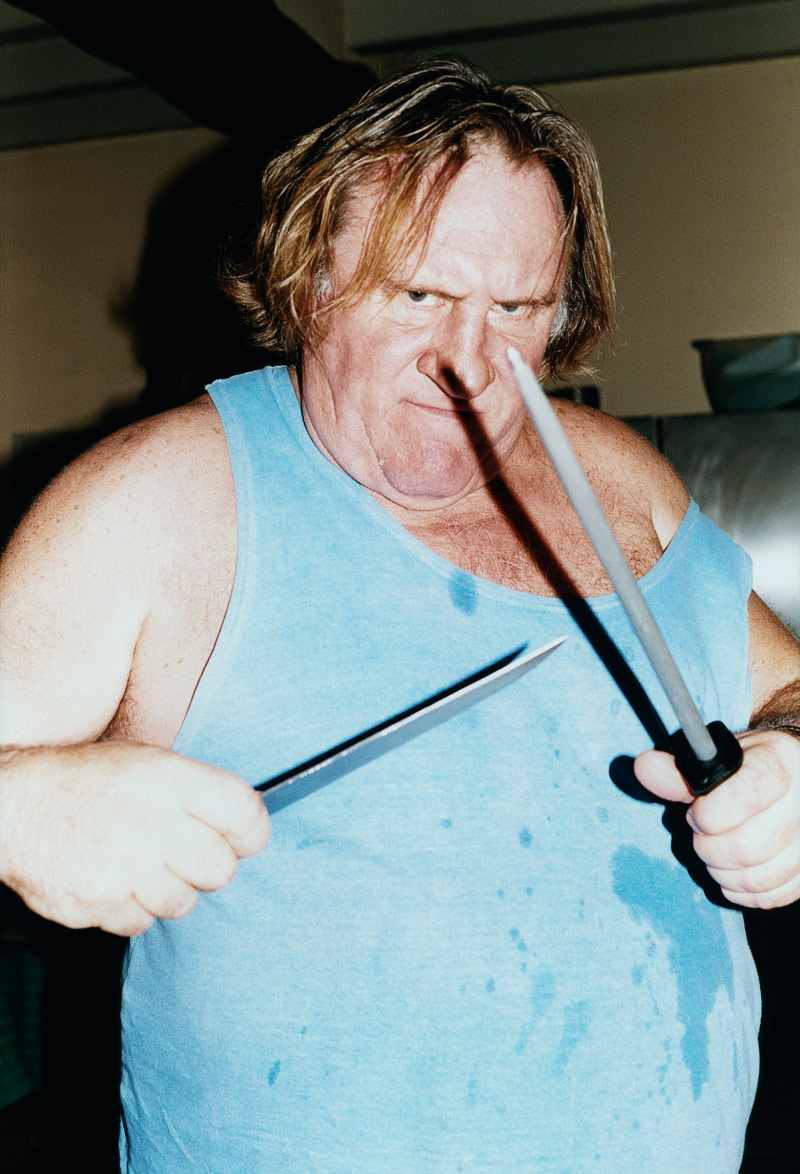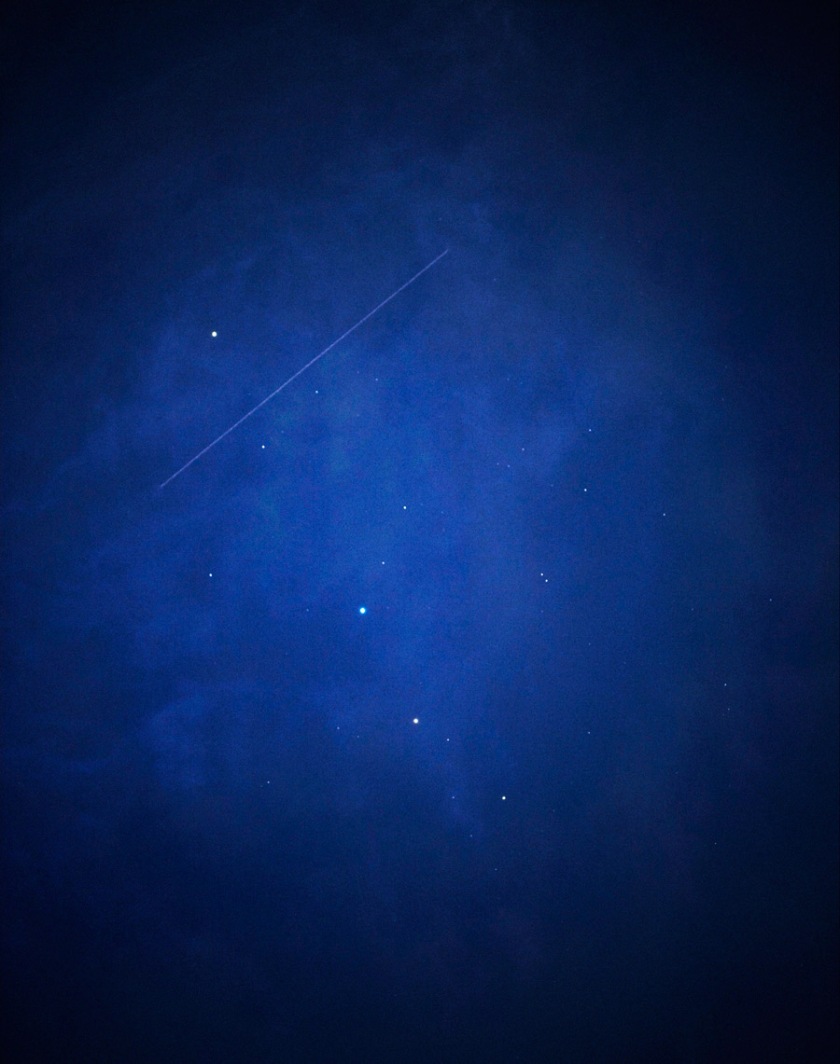Exhibition dates: 9th June – 26th August 2012
Participating artists: Lara Almarcegui, Dimitry Astakhov, Sammy Baloji, Walead Beshty, Ursula Biemann, Fernando Brito, Moyra Davey, Lukas Einsele, Cédric Eisenring / Thomas Julier, Michael Elmgreen / Ingar Dragset, Alfredo Jarr, Jérôme Leuba, Market Photo Workshop, Erica Overmeer, Trevor Paglen, Willem Popelier, Gosha Rubchinskiy, Jules Spinatsch, Hiroshi Sugimoto, Fiona Tan, Jonas Unger, Unknown Taliban, Lidwien van de Ven, wearethe99percent
Elmgreen & Dragset
Untitled (Prada Marfa)
2007
C-print
160 x 204cm
© Michael Elmgreen & Ingar Dragset / Courtesy Galerie Perrotin, Paris
The word status (noun) can mean the position of an individual in relation to another or others, especially in regard to social or professional standing. The word derives from the Latin posture, from stãre to stand. What is the standing of these photographs (as documents)? What does their posturing suggest, when the time of contemporary photographs has become but a series of disconnected presents/presence.
Mike Featherstone observes that, “Postmodern everyday culture is a culture of stylistic diversity and heterogeneity (comprising different parts or qualities), of an overload of imagery and simulations which lead to a loss of the referent or sense of reality. The subsequent fragmentation of time into a series of presents through a lack of capacity to chain signs and images into narrative sequences leads to a schizophrenic emphasis on vivid, immediate, isolated, affect-charged experiences of the presentness of the world – of intensities.“1
It is these intensities that we confront in the (Facebook) frenzy of contemporary photography. It is this schizophrenic inability to sustain a coherent identity that the photographs in this posting address. The words embedded in the media statement give ample latitude for the exploration of these immediaces: complex network, loose associations, immediate relationships, current status, apparent jumps and various themes to name but a few. But Annette Kuhn notes, “The truth / authenticity potential of photography is tied in with the idea that seeing is believing. Photography draws on an ideology of the visible as evidence. The eye of the camera is neutral, it sees the world as it is: we look at a photograph and see a slice of the world. To complete the circuit of recording, visibility and truth set up by the photograph, there has to be someone looking at it …”2 Kuhn continues, “A photograph, however much it may pretend to authenticity, must always in the final instance admit that it is not real, in the sense that what is in the picture is not here, but elsewhere.”3
The photograph evacuates its own meaning, its status as document; its posturing lies elsewhere. This very quality of absence may augment the voyeuristic pleasure of the spectator’s look.4 We return again and again to look at these fleeting, fetishistic images, to confirm their documentary status, that they do exist – to confirm our pleasure, the scopophilic desire for pleasurable looking. In the end we can ask, what do the photographs of a fake Prada shop in the desert, the perfect pink circles of identity / identical absence represent?
What are we really seeing? Do they really exist, do we really exist. Is living really believing?
Dr Marcus Bunyan
- Featherstone, Mike. Consumer Culture and Postmodernism. London: Sage Publications, 1991, p. 124
- Kuhn, Annette. The Power of the Image: Essays on Representation and Sexuality. London: Routledge and Kegan Paul, 1985, pp. 27-28
- Ibid., pp. 30-31
- Ibid., pp. 30-31
.
Many thanx to Fotomuseum Winterthur for allowing me to publish the photographs in the posting. Please click on the photograph for a larger version of the image.
Jérôme Leuba (Swiss, b. 1970)
Battlefield #60, Goldmine
2009
C-print
40 x 58cm
© Jérôme Leuba / Courtesy Blancpain Art Contemporain, Geneva
Willem Popelier (Netherlands, b. 1982)
Showroom Girls (detail)
2011
5 Inkjet prints
128 x 90.5cm each
© Willem Popelier
Photographer Willem Popelier (Eindhoven, 1982) found by accident 91 photographs and two films made by two girls on a publicly accessible computer. This was the start of a long-running project in which Popelier researched the role of photography on the internet and in social media. The result is the exhibition, Showroom Girls, an intimate portrait of one of the girls in the form of pictures and texts by her hand that Popelier found online.
Webcam
Whilst working on another project, Showroom, Popelier was looking for showroom computers which visitors use to take pictures of themselves by using the computer’s webcam. He discovered that people leave these pictures on the computer in the shop. Popelier started to collect these images. Photographs of anonymous people who portray themselves in the public domain and upon occasion rather obsessively.
On one particular computer Popelier found almost a hundred pictures made by two girls. After more research he discovered that the girls had produced around two hundred images in almost an hour. A large number of these shots were removed, but the girls had left a number on purpose. One of the girls wore a necklace stating her name. Popelier started to look for her on the internet and found both girls on various websites such as Hyves, Facebook and Twitter. Via the internet Popelier got access to the tweets of one of the girls, but also managed to find her address and even her school results. And all of this he found legally, without hacking into any secret or inaccessible data. With all the collected material he put together the exhibition Showroom Girls.
Text from the Foam website
wearethe99percent.tumblr.com
Tumblr website, since August 2011
A few years after the digital turn the shift from analog to digital image production and archiving, Fotomuseum Winterthur explores the current state of the document and the documentary image in the exhibition Status – 24 Contemporary Documents. Whereas the term “status” used to have a thoroughly positive connotation, indicating a confident display of one’s own condition or state, today we ask about the “status” of things almost with a sense of apprehension, knowing full well that situations are often uncertain, precarious, and usually in flux. This uncertainty carries over into the field of photography. The rapid dissemination and availability of images and videos in print media, on the Internet, on social platforms such as Facebook, Google, Twitter, or Flickr have led to new forms of communication through documentary images. Often we do not know who took the picture, nor do we know how the picture has made its way to us. How are these photographic documents to be understood? How do the schemata of seeing, understanding, deleting, and saving function in our contemporary multi-media environment?
The 24 exemplary “documents” selected for this exhibition come together in a complex network of loose associations and immediate relationships, which attempts to capture the current status of the documentary image. The apparent jumps between various themes and media formats, between official press images (Vladimir Putin fishing) and anthropological studies of the family image (the Vox Populi work by Fiona Tan) correspond to our current viewing experience as alternating between high and low, surface and depth. The conquest of unknown territory and the quiet contemplation of a personal theme form two poles of the exhibition. Whereas Trevor Paglen uses meticulous, scientific precision to offer proof of hidden US satellites operating in the night sky, Sammy Baloji, Jérôme Leuba, and Lara Almarcegui rescue removed sites or unusual biographies from oblivion. In 2009 Almarcegui was able to photograph the overgrown lots in East London that have now been built up and will be the sites of the Summer Olympics 2012.
The exhibition Status – 24 Contemporary Documents pursues the traces photography leaves behind, travelling at both analog and digital speeds. Through her video camera, Moyra Davey delves into a volume of photographs that is important to her, Portraits in Life and Death by Peter Hujar, and thereby creates a parable of decelerated reading and looking. Willem Popelier examines the shifting identities and presentations of the self through his work Showroom Girls, which offers an exemplary reflection on a younger generation’s behaviour in social networks. Conceived and realised by Jules Spinatsch, the 24-hour panorama of the trading floor of the German stock exchange in Frankfurt – a site highly familiar from media images – enables us to witness the simultaneous recording, receiving, and saving of information in the form of a 14-meter wall installation, whose individual components will come together at Fotomuseum Winterthur over the course of the opening day of the exhibition on June 8, 2012 and depict a complete calendar day.
The exhibition is organised by Thomas Seelig, curator at Fotomuseum Winterthur.
Press release from the Fotomuseum Winterthur website
Anonymous
Taliban
2001
C-print
9 x 13cm
© Collection Thomas Dworzak / Courtesy Magnum Photos, Paris
Jonas Unger
Gérard Depardieu
2010
C-print
60 x 40cm
© Jonas Unger
Trevor Paglen (American, b. 1974)
LACROSSE/ONYX II Radar Imaging Reconnaissance Satellite Passing Through Draco (USA 69)
2007
From the series: A Compendium of Secrets
C-print
152 x 122cm
© Trevor Paglen / Courtesy Galerie Thomas Zander, Cologne
Fotomuseum Winterthur
Grüzenstrasse 44 + 45
CH-8400
Winterthur (Zürich)
Opening hours:
Tuesday to Sunday 11.00 – 18.00
Wednesday 11.00 – 20.00
Closed on Mondays








You must be logged in to post a comment.